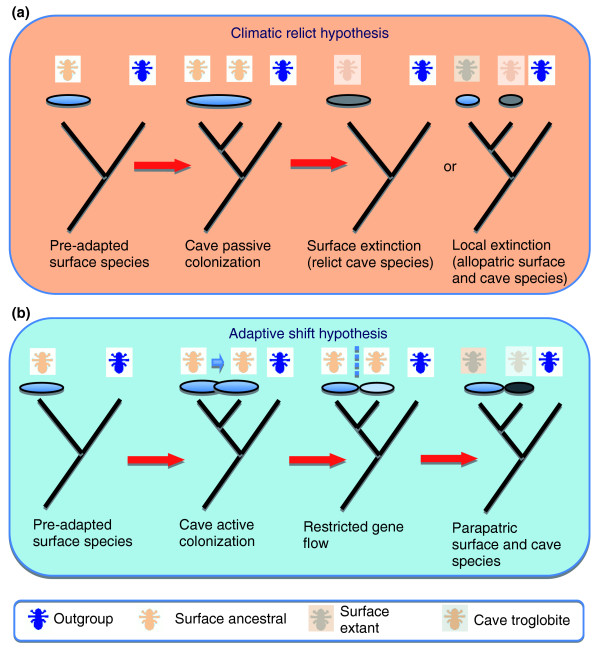Figure 2.
Speciation models in subterranean taxa. Schematic diagram of (a) the 'climatic relict' and (b) the 'adaptive shift' hypotheses. In the former, a broadly distributed surface species that has exaptations (pre-adaptations) to the underground environment invades the caves. The underground population remains in contact with the surface population, limiting genetic divergence of the two. Climatic oscillations cause local extinction of surface populations, whereas surviving populations remain in the underground. The predictions from this for geographic distribution are that either only relict cave-dwelling lineages survive, or surface populations are strictly allopatric and geographically remote with respect to the underground. Over time, cave populations differentiate, developing troglomorphic characters and become reciprocally monophyletic. In the adaptive shift hypothesis caves are invaded by surface populations, exploiting new resources with the establishment of differential selection pressures in the epigean and underground environments. Speciation is driven by divergent selection accompanied by a reduction of gene flow. In this case, surface and cave species are expected to have parapatric distributions, at least during the initial phases of the process. Ellipses represent geographic distributions of populations. Troglobite is the term given to animals that have become adapted to dwell in cave environments and that cannot survive outside such environments. Diagram modified from Figures 1 and 2 in [2].

